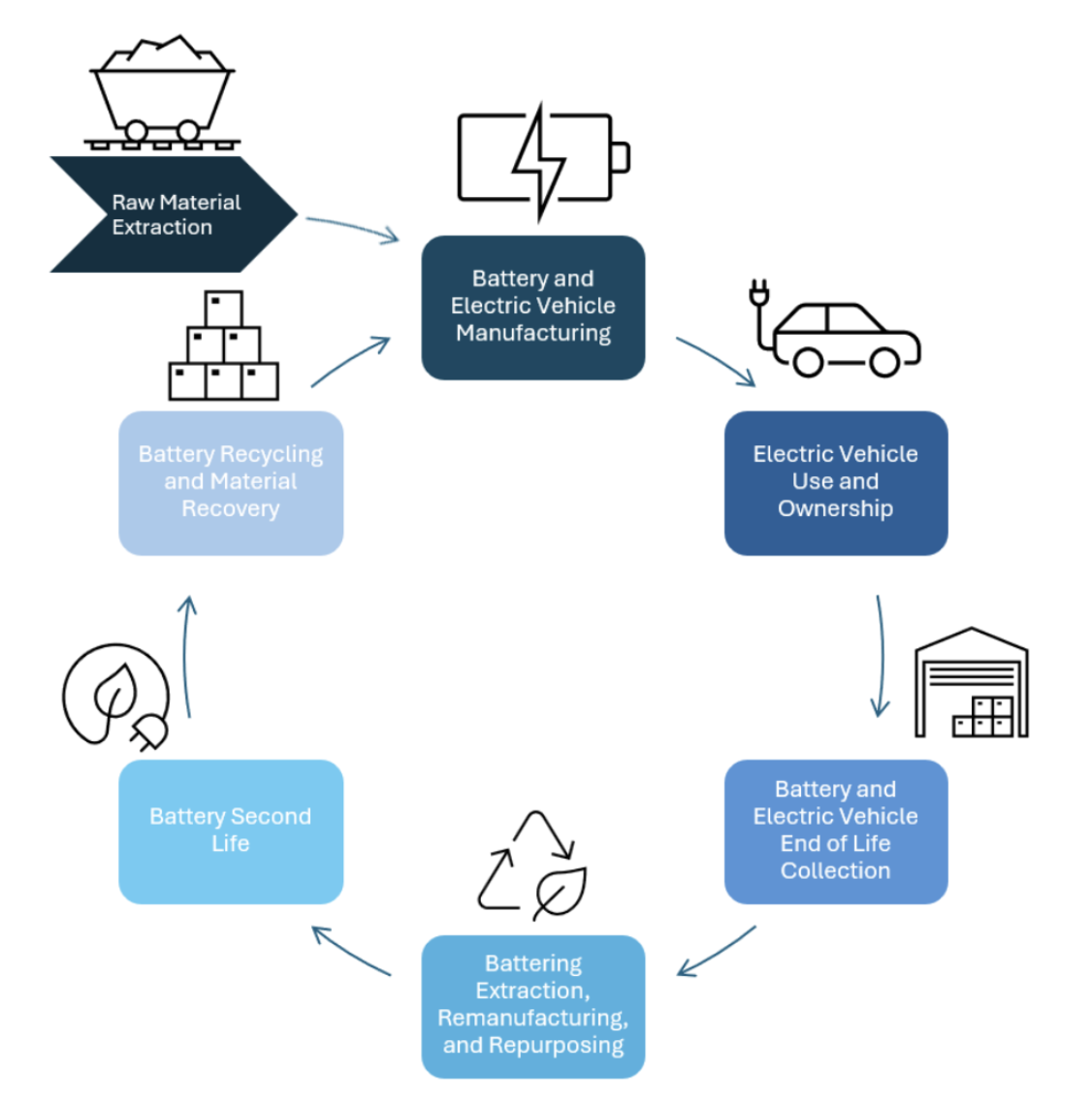Project Closed Circuit: Helping Cities Lead on EV Battery Circularity
The New York Climate Exchange recently launched Project Closed Circuit, a new project to put cities at the center of electric vehicle (EV) battery circularity.
What is EV Battery Circularity?
Figure: Global EV Stock vs. forecasted demand (2018-2023 forecasts, 2024 actual) [International Energy Agency, Annual Energy Outlooks 2018-2024]
Batteries are at the heart of the effort to electrify the economy and move away from fossil fuels. From powering EVs to storing electricity generated by wind and solar, global battery demand has surged by around 33% per year over the past 30 years. Nearly 95% of recent growth is driven by EVs. In 2013, there were only 100,000 electric vehicles on the road worldwide; just 10 years later that number reached 40 million!
The transition to EVs comes with challenges.
All batteries require rare earth materials—85% of the world’s lithium, 70% of its cobalt, and 10% of its nickel go to battery production—and we’ll need hundreds of new mines to meet growing demand. Many of these mines come with environmental and human rights concerns and increase the world’s dependence on unstable supply zones.
Still, EVs are much less harmful to the environment than gas-powered vehicles, however high upfront costs and questions about battery life contributes to slow adoption. Like cell phones, EV batteries degrade over time. Around 7-12 years into an EV battery’s life, it loses about 25% of its original strength. At this stage, the battery may struggle to maintain peak performance, despite having 70-80% of its charging capacity.
Disposing these batteries in landfills risks contamination from toxic materials and recycling them prematurely wastes their remaining value. A single-use EV battery is unsustainable. Without a better way recycle and repurpose batteries, the growing EV market could turn a climate solution into an environmental crisis.
A “circular” approach offers a sustainable solution and massive market opportunity.
Figure: A Circular Economy for EV Batteries. Credit: Wyatt Williams
A circular strategy maximizes a vehicle’s lifecycle using intelligent battery management. This first stage involves using data to optimize battery performance so it can be used longer before being discarded.
Once a battery’s charging capacity degrades to 70-80%, it can be reused or repurposed. These second–life batteries can be used in building energy systems or electrical grid storage. This approach transforms a battery, once considered garbage, into a valuable asset, and allows EV owners to earn money from their used batteries. These circular economy principles make EV ownership more affordable and environmentally responsible.
Finally, at the end of its life, the battery can be recycled. Recycling processes extract and purify raw materials and send them back to manufacturers for new batteries. This closed-loop approach dramatically reduces the need to mine new materials, creating a sustainable cycle that minimizes waste and environmental impact.
Current estimates value the battery circularity market to be $7 billion by 2033. According to The International Energy Agency, battery circularity could decrease the need for critical mineral mining by up to 40% and decrease greenhouse gas emissions by up to 80%. EV batteries that are suitable for second-life applications could create more than 200 GWh of power—enough energy to power around 18,500 American homes for a year—by 2030 Plus, local circular economies for batteries reduce dependence on foreign sources of raw materials
Cities are already at the forefront of the battery revolution: they are home to the majority of EV fleets and owners, charging infrastructure, and the bulk of the growth in energy storage systems – making them ideal innovation grounds for battery circularity. This deployment ecosystem means the potential for demonstrating battery circularity is at our fingertips. It just needs some support and coordination.
Introducing Project Closed Circuit: at the heart of battery circularity.
Project Closed Circuit leverages The New York Climate Exchange’s partner network of battery experts and resources, business and public–sector engagement, convening, and thought leadership to deliver:
Framing and analytical content
Key industry events that facilitate learning and collaboration
Technology and regulation across and beyond our partners to advance a circular economy for batteries
What will this look like?
Awareness: Expanding the network of individuals who are advancing battery circularity by sharing its importance with new audiences — from city officials to fleet operators, waste management professionals to insurers and financiers, and national security and supply chain logisticians to sustainability advocates.
Urban Solutions: Developing communities of practice across and beyond the Exchange’s partner network to ensure that local lessons from the battery ecosystem extend across geographies. These convenings will focus on researchers, city officials, regulators, startups and private sector businesses, fleets, and energy system developers.
Implementation: Project Closed Circuit will initially focus on The Exchange’s home — New York City. With a regulatory and economic framework that informs cities worldwide, NYC is poised to become a leading hub and global model for resource–efficient battery innovation, investment, and safe deployment. This will be achieved through policy, local access to battery data and end-of-life battery assets, and the development of a replicable roadmap for battery circularity in urban environments.
Want to learn more, get involved in, or receive updates about this project and its events? Email us at batteries@nyclimateexchange.org with the subject line “Project Closed Circuit”.


